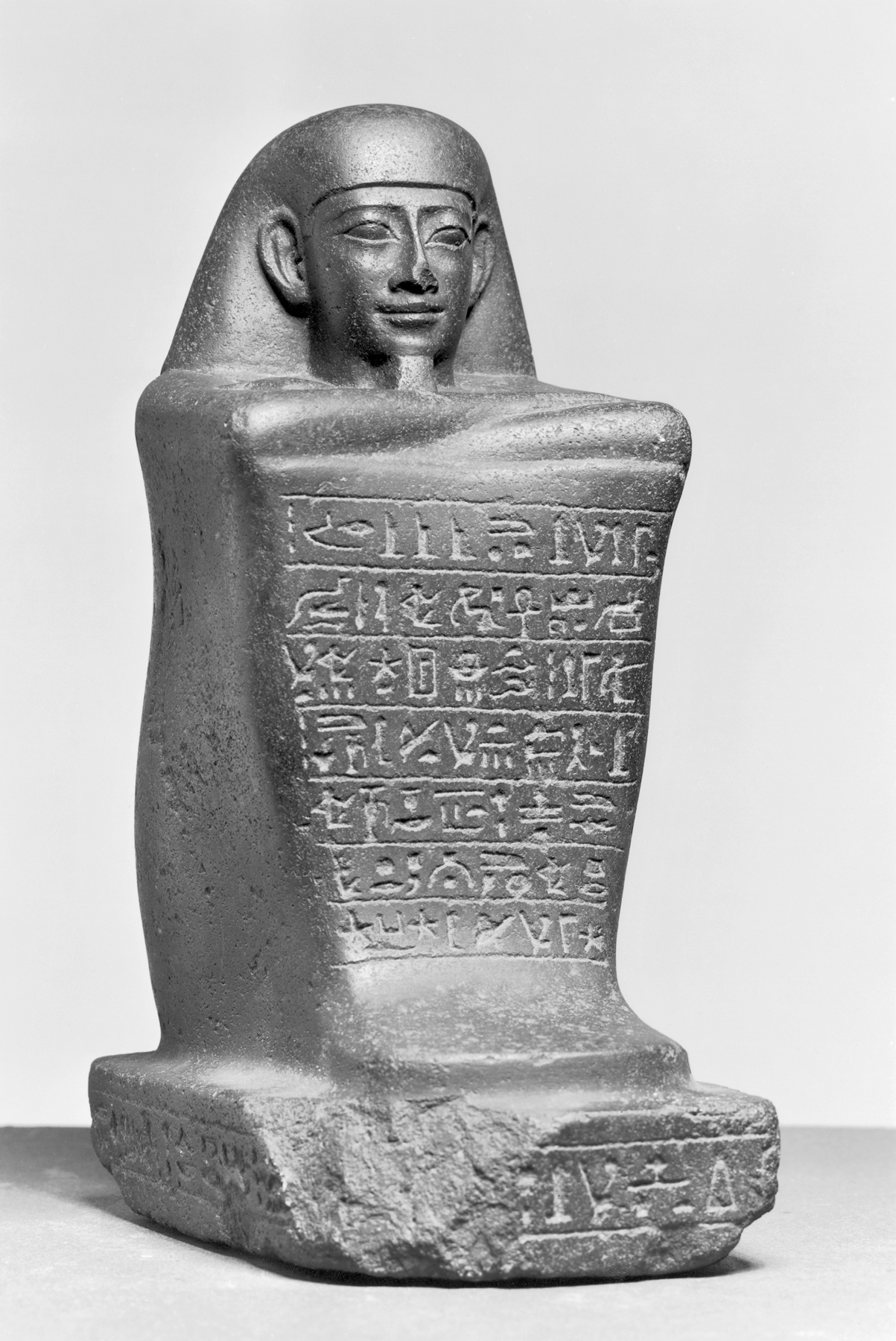Block Statue of Ankh-pekhred
(Ancient Egypt and Nubia )
Block statues could be found in either tombs or temples. The human figure is carved as a simple, cubic mass that is both stable and durable, important features for an object intended to be an eternal dwelling place for the spirit of its deceased owner. The surface of the block also provided space for inscriptions. The texts on this statue are addressed to the clergy of the temple, requesting offerings and other benefits for Ankh-pekhred.
Provenance
Provenance (from the French provenir, 'to come from/forth') is the chronology of the ownership, custody, or location of a historical object. Learn more about provenance at the Walters.
Dikran Kelekian, New York and Paris; Henry Walters, Baltimore, 1929, by purchase; Walters Art Museum, 1931, by bequest.
Conservation
| Date | Description | Narrative |
|---|---|---|
| 10/6/1998 | Examination | survey |
Geographies
Egypt, Karnak (Place of Origin)
Measurements
10 11/16 x 4 3/4 x 6 5/8 in. (27.2 x 12 x 16.8 cm)
Credit Line
Acquired by Henry Walters, 1929
Location in Museum
Accession Number
In libraries, galleries, museums, and archives, an accession number is a unique identifier assigned to each object in the collection.
In libraries, galleries, museums, and archives, an accession number is a unique identifier assigned to each object in the collection.
22.178


